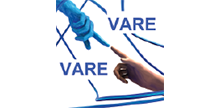Virtual reality and augmented reality low cost: an experience of heritage education in primary school
- a MSc in Informatic. Assistant professor at Centro Universitário de João Pessoa (UNIPÊ) – Brazil
- b PHD in Science - PEC/COPPE/UFRJ and PHD in Fine Arts EBA/CLA/UFRJ. Professor at EBA/UFRJ – Brazil
- c MSc in Science - Historician and researcher - Brazil
Cite as
D. Lacet, I. Fernandes Braga, J. Lemos Lacet (2018). Virtual reality and augmented reality low cost: an experience of heritage education in primary school. Proceedings of the 4th International Conference of The Virtual And Augmented Reality In Education (VARE 2018), pp. 198-202. DOI: https://doi.org/10.46354/i3m.2018.vare.029
Abstract
Preserving the historical and cultural heritage is one of the ways to safeguard the memory of a period of history, especially regarding to architectural monuments. Throughout the world there are cities with historic buildings or monuments to visit and one of the great challenges is to make residents aware of the value and representativeness of these constructions for the preservation of the local culture. In this context heritage education should start early with initiatives involving elementary school children. Nowadays children have access to technological devices such as smartphones or tablets from a very early age, and therefore, the use of these resources can be valid to aid in heritage education. That is why some alternatives have been researched to offer virtual visits through some device or technological resource. Several companies have developed equipment capable of simulating virtual environments or superimposing information in the real world with great quality, but with very high prices. Undergraduate students in Architecture of the University Center of João Pessoa - UNIPÊ and public elementary school students worked together on this project, developed considering the use of low cost equipment, printed on 3D printers and using free software.
Virtual Reality | Augmented Reality | Virtual Heritage | Virtual Historical Monuments | Panoramic 360 | Photography | Virtual Reality Glasses
References
- GRUNBERG, Evelina. Manual de atividades práticas de educação patrimonial. Brasília: IPHAN, 2007.
- HUIZINGA, J., Homo ludens: o jogo como elemento da cultura. São Paulo: Perspectiva. 1971.
- ALVES, L. R. G. Nativos Digitais: Games, Comunidades e Aprendizagens. In: MORAES, Ubirajara Carnevale de. (Org.). Tecnologia Educacional e Aprendizagem: o uso dos recursos digitais. Livro Pronto: São Paulo, 2007, v., p. 233-25.
- MILGRAM, P. et. al. Augmented Reality: A Class of Displays on the Reality-Virtuality Continuum. Telemanipulator and Telepresence Technologies, SPIE, 1994, V.2351, p. 282-292.
- AZUMA, R. et al. Recent Advances in Augmented Reality. IEEE Computer Graphics and Applications, 2001, v .21, n.6, p. 34-47.
- HORTA, Maria de Lourdes P.; GRUNBERG, Evelina: MONTEIRO, Adriane Queiroz. Guia Básico de Educação Patrimonial. Brasília: IPHAN, Museu Imperial, 1999.
- IPHAN - Instituto do Patrimônio Histórico e Artístico Nacional. Educação Patrimonial: diálogos entre escola, museu e cidade/Instituto do Patrimônio Histórico e Artístico Nacional (Ipahn); Organização, Átila Bezerra Tolentino [et al.].- João Pessoa: Iphan, 2014.
- Yovcheva, Z., Buhalis, D. & Gatzidis, C. 2012, "Overview of smartphone augmented reality applications for tourism", e-Review of Tourism Research, vol. 10, no. 2, pp. 63-66.
- Longo, F., Nicoletti, L., Padovano, A. & Vetrano, M. 2017, "An intelligent serious game for a Multi-Device cultural heritage experience", International Journal of Simulation and Process Modelling, vol. 12, no. 6, pp. 498-514.
- Longo, F., Nicoletti, L., Padovano, A. & Vetrano, M. 2017, "An intelligent serious game for a Multi-Device cultural heritage experience", International Journal of Simulation and Process Modelling, vol. 12, no. 6, pp. 498-514.
